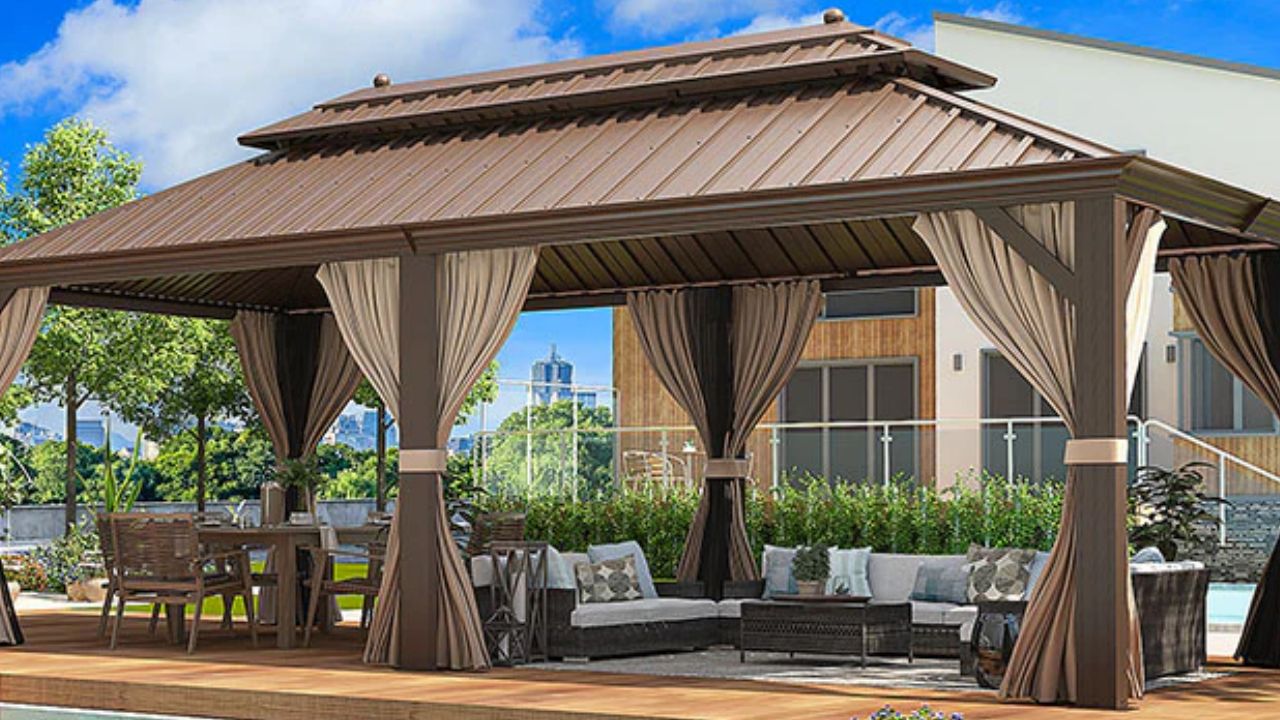A gazebo is an attractive and useful piece of backyard construction that can be an attractive little nook to relax, have some entertaining or just enjoy the shade. The right gazebo is a purchase that has many considerations; size, materials, design, and even maintenance are concerns that intrigue many people when this type of purchase is discussed. With that, we’ll walk you through everything you need to know to buy a gazebo before you find the perfect structure for your private outdoor space.
What To Know Before Purchasing A Gazebo?
1. Determine Your Purpose for the Gazebo
First of all, you should think about what you want to use a gazebo for – it will make you decide on style, size and materials. If setting up for outdoor dining, then a large gazebo will allow tables and chairs to be taken outside. A smaller gazebo that has some comfortable seating may allow it to become a relaxation retreat. Choose a style for a garden feature that will complement the landscaping. Defining the purpose allows you to locate the perfect gazebo setup.
2. Consider Gazebo Styles and Shapes
There are a variety of styles for gazebos, providing a different level of charm for the outdoor space. Hexagonal or octagonal traditional gazebos bring a timeless elegance to your garden landscape and can look lovely, complementing the garden landscape. Gazebos available in square and rectangular shapes are spacious and offer enough space for the festivities during larger shoulder parties or outdoor dining. While pop-up gazebos are convenient and perfect for temporary events, they aren’t as strong as other permanent models. Gazebos are pergola-style gazebos with an open roof design that allows filtered sunlight into the building, creating shaded but sunlit areas ideal for patios or cozy sitting spots.
3. Choosing the Right Materials
The material of your gazebo will vary in durability, maintenance required, and appearance. The gazebo material might have different durability, maintenance, and even aesthetic properties.
Here’s a guide to popular choices:
- Wood: Wood is a classic, cedar and redwood are known for their look, but also resists rot and insects, and needs bit of upkeep to weather.
- Metal: The aluminium is used in gazebos and steel is a good choice for the roof as all steel won’t rust. Heavy duty aluminium is lighter than steel, and heavy duty steel is even heavier than aluminium.
- Vinyl: Vinyl Gazebos are durable and low maintenance. However, they lack wood’s rustic charm.
- Fabric or Canvas: Often used for pop-up gazebos, these are easy to set up but less durable, needing storage in harsh weather.
Consider your climate and maintenance preferences when choosing. Wood and metal are ideal for permanent setups, while vinyl and fabric suit those looking for minimal maintenance or temporary use.
4. Size and Location
Choosing the right size and location is essential for a functional, appealing gazebo. Measure your space and ensure adequate clearance. Small gazebos (6-10 feet) fit two to four people, medium ones (10-14 feet) suit dining for six to eight, and large gazebos (14+ feet) are perfect for larger gatherings. Place your gazebo with a nice view and natural shade, and check any local zoning requirements if installing permanently.
5. Weather Resistance and Durability
Consider your climate when choosing a gazebo. In areas with heavy rain or snow, opt for materials like metal or treated wood that can withstand harsh weather. Look for a gazebo with a sloped roof to prevent water or snow accumulation. In windy areas, anchor the gazebo securely or choose a structure designed to handle wind loads. Some metal gazebos also come with reinforced frames for added stability.
6. Maintenance Requirements
Different materials require varying levels of upkeep:
- Wood Gazebos: Regular staining or sealing to protect against weathering, as well as occasional checks for rot or insect damage.
- Metal Gazebos: Occasional cleaning and, if necessary, repainting to prevent rust (especially steel).
- Vinyl Gazebos: Minimal maintenance, just regular cleaning.
- Fabric Gazebos: Cleaning and storing the canopy during the off-season to prevent damage.
Find a gazebo that meets your maintenance level and comfort level in terms of time and effort it takes to maintain.
7. Extra Features to Consider
Many gazebos come with additional features that can enhance their functionality:
- Screens and Curtains: Great for keeping bugs out while adding privacy.
- Lighting: String lights or solar-powered lights can give you a cozy evening atmosphere.
- Heating or Cooling Options: Your gazebo can be used in warm climates or heaters for cool areas.
- Flooring: Some gazebos may come with built-in floors, and others may need a separate deck or concrete base.
Conclusion
Having a look at size, attire, materials and use is considered while purchasing your gazebo to get the perfect outdoor space. If you’re looking for a gazebo, that’s almost impossible, because you need to know what you desire in a gazebo, what material works best for your climate, and what to look for in other features to guarantee that the gazebo you purchase is appropriate for your outside room. One that works will make your gazebo your backyard’s prized focal point, a nice, practical, comfortable spot outside that you will enjoy for a long time.

